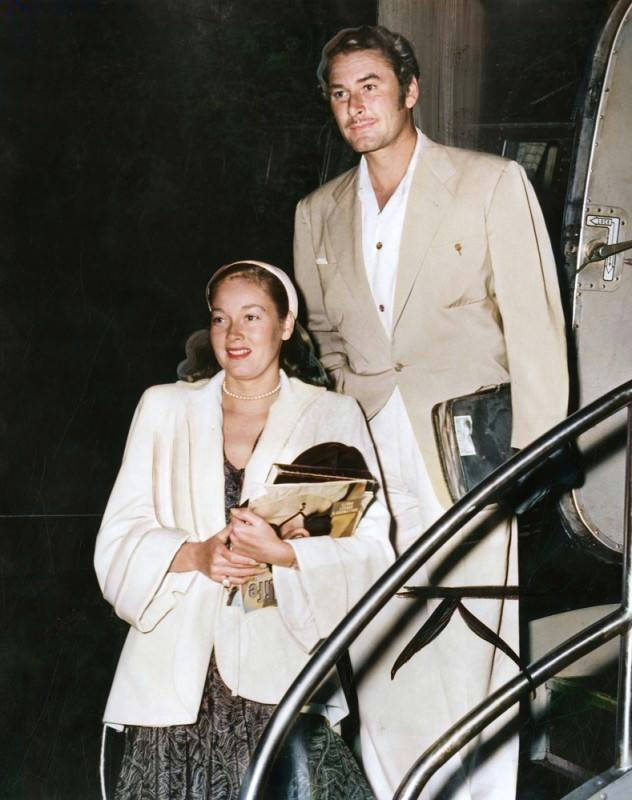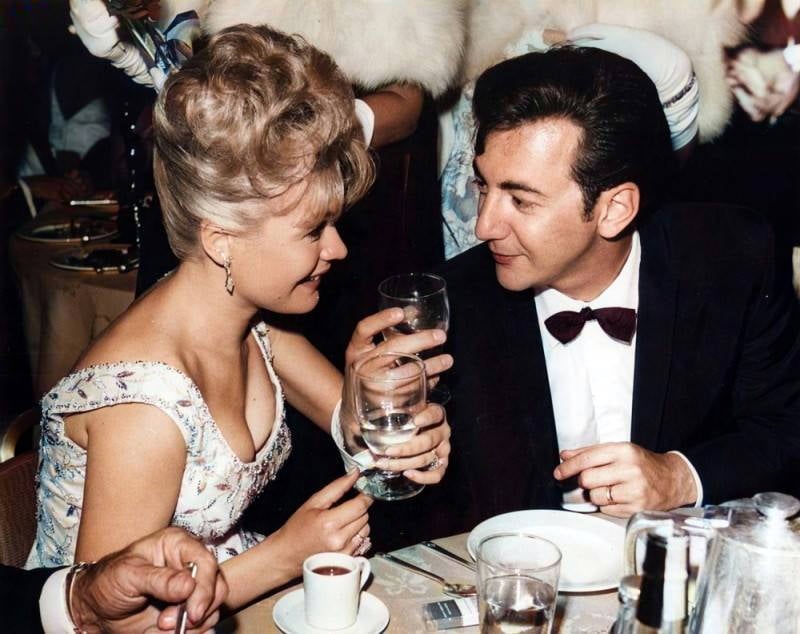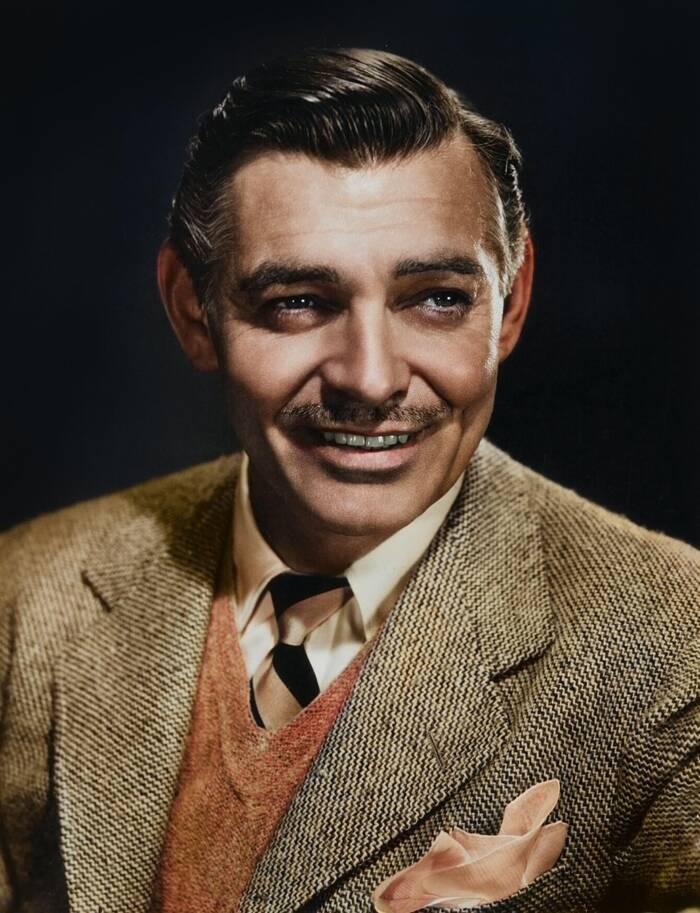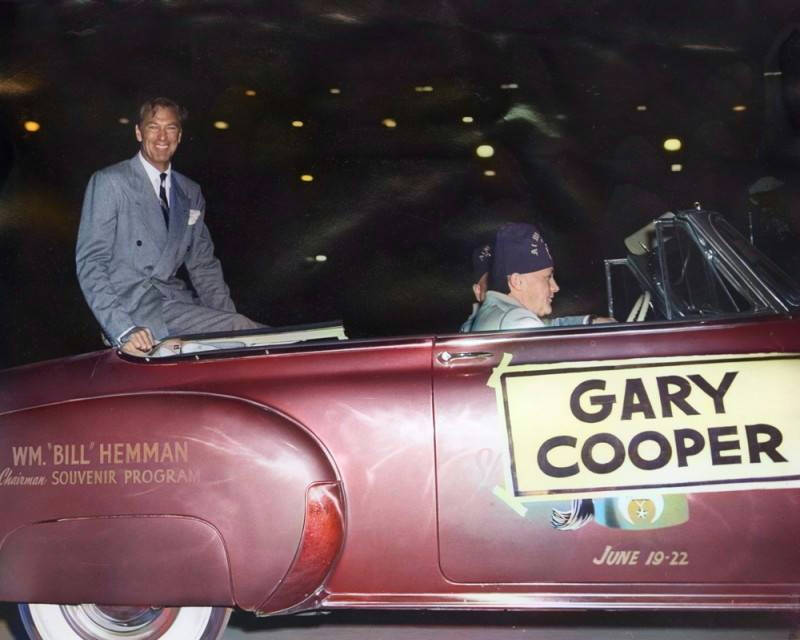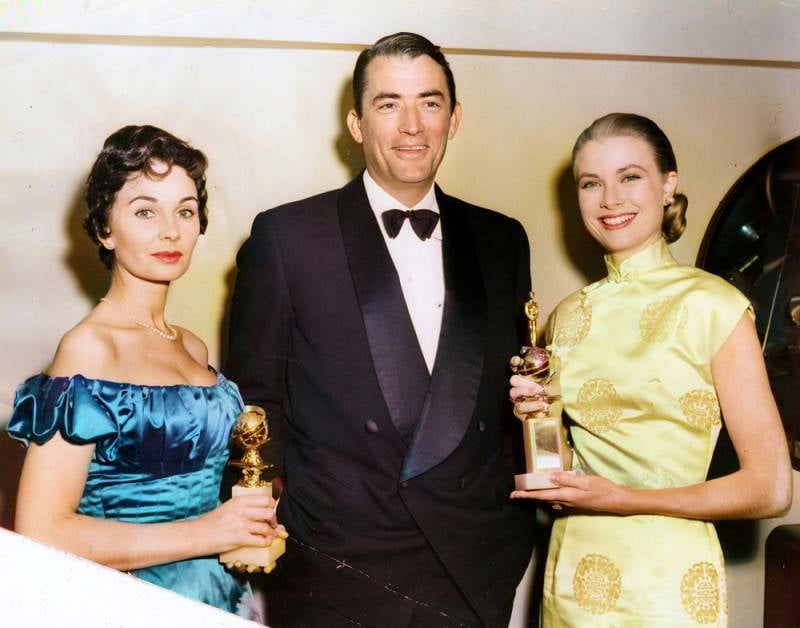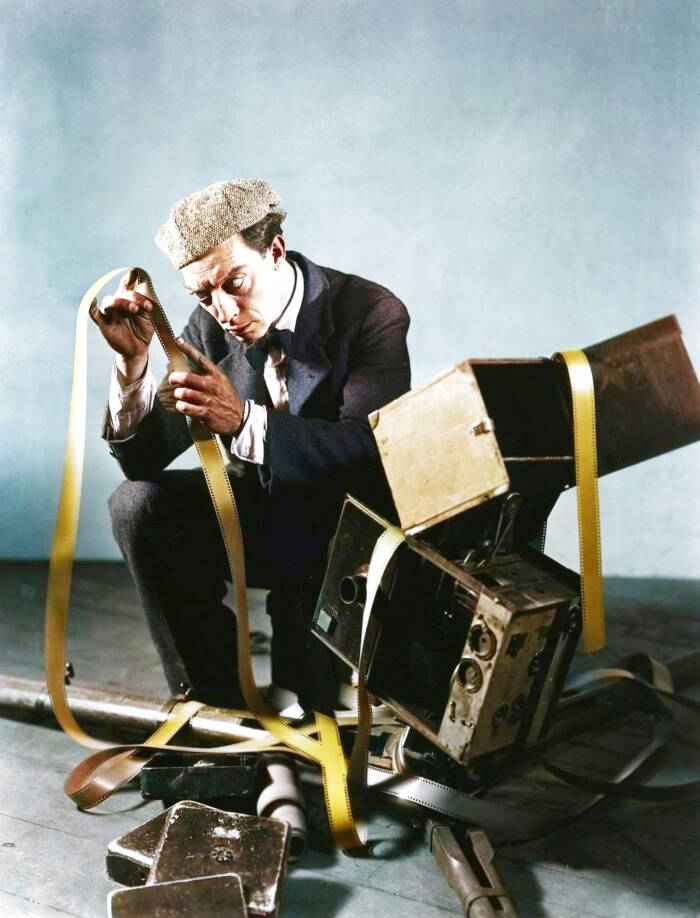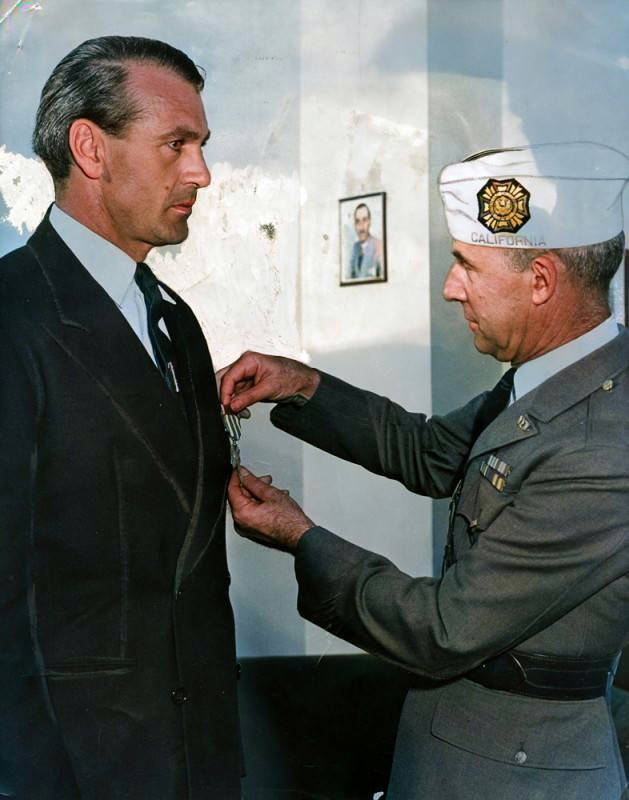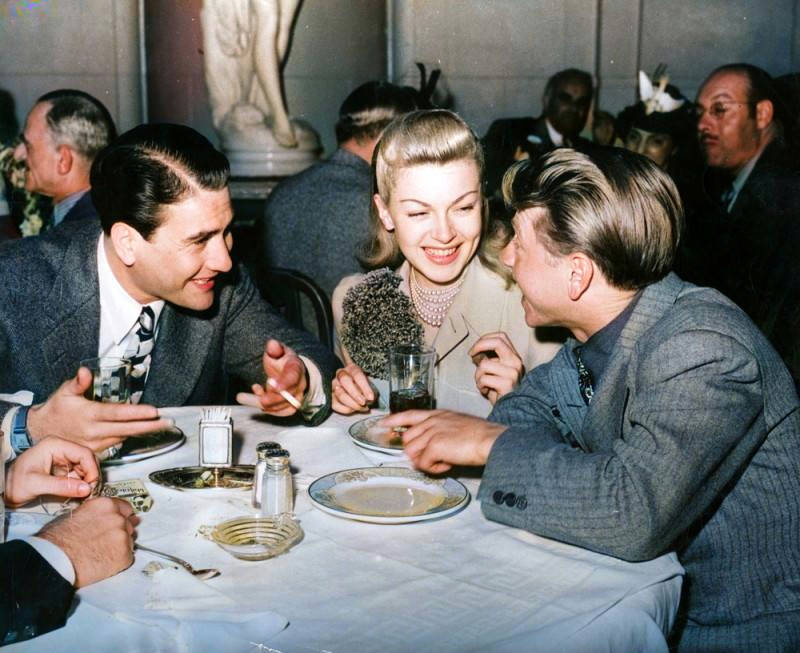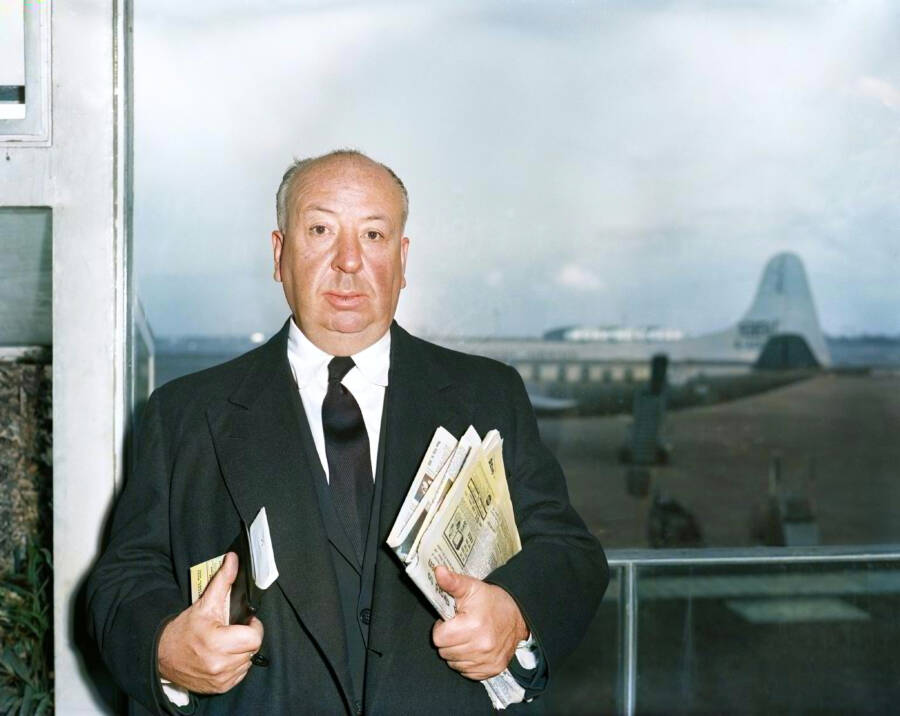From Audrey Hepburn to Alfred Hitchcock, these colorized photos capture the Golden Age of Hollywood as it really was.
Today, it may feel like every big movie is being produced by the same few studios. While it is certainly true that the likes of Walt Disney Pictures, Warner Bros., and Sony Pictures tend to dominate the box office in modern times, independent companies like A24 and Neon prove that there are other players in the game. And compared to the so-called Golden Age of Hollywood, today’s film industry is drastically more diverse.
Hollywood’s Golden Age lasted from around the late 1920s to the early 1960s, generally comprising the period after “talkies” replaced silent films and before the rise of “New Hollywood” when talents like Steven Spielberg, Woody Allen, George Lucas, and Francis Ford Coppola entered the scene. The Golden Age of Hollywood was responsible for some of the most cherished films of all time, including The Wizard of Oz, Citizen Kane, Gone With the Wind, Casablanca, and It’s A Wonderful Life.
Of course, the Golden Age of Hollywood wasn’t without its issues. Given the era, some films produced during this time period were deeply racist, misogynistic, or xenophobic. They were, in a sense, products of their time, as were the people who wrote, directed, and starred in them.
Still, many films produced during this era have a sort of enigmatic allure to them that has proven to be difficult to replicate in the years since. Explore the Golden Age of Hollywood through our gallery of colorized photos below.
When Was The Golden Age Of Hollywood?
There is some debate about when the Golden Age began and ended. Some cite the 1915 release of D.W. Griffith's The Birth of a Nation as the beginning of Hollywood's Golden Age, though as StudioBinder notes, the film was horribly racist and partially prompted the resurgence of the Ku Klux Klan.
Despite the appalling content, The Birth of a Nation did showcase what a movie was capable of in terms of technical creations and storytelling. However, it wasn't until years later that another major innovation in film propelled the industry even further forward: people speaking.
The Jazz Singer was the first "talkie" to be released in 1927, ushering in a new era that made silent films largely a thing of the past. When most people think about the Golden Age of Hollywood cinema, most of the earliest films that come to mind are the "talkies" from this period, so it's a reasonable argument to say that 1927 marked the start of Hollywood's Golden Age.
No Film School seems to agree with this assessment, stating, "Classic Hollywood cinema is a term used to describe the visual style and narrative conventions of American cinema between 1927 and 1963."
Common Elements That Defined Golden Age Hollywood Cinema
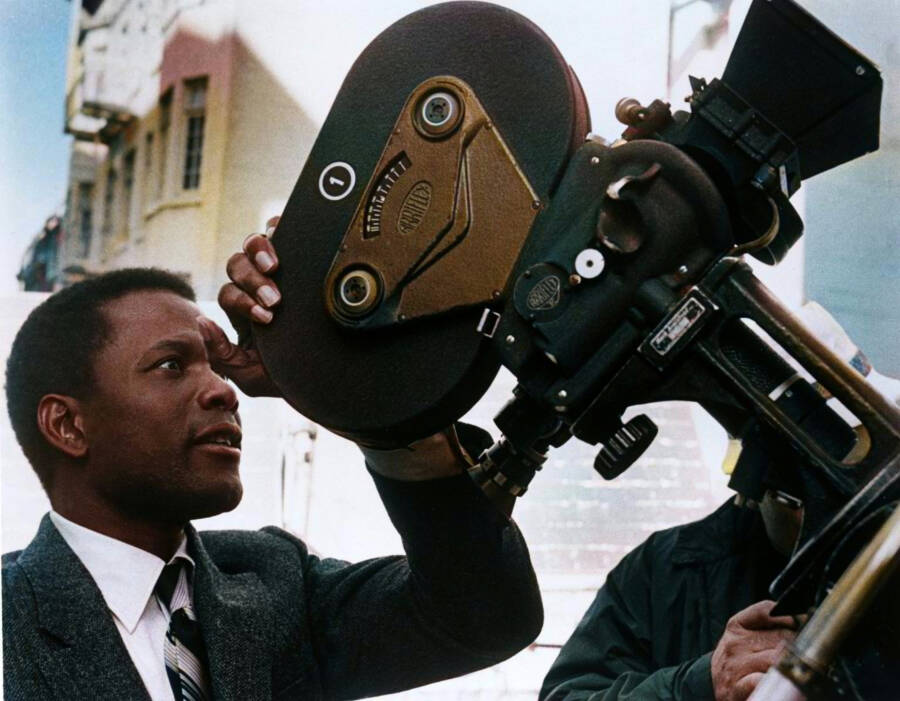
United Archives GmbH/Alamy Stock PhotoActor Sidney Poitier behind the camera.
Golden Age Hollywood films had many common elements between them, which can further be used to define the period. These elements, according to No Film School, included psychologically defined individuals, a struggle to solve a problem or achieve a goal, a conflict with other people or external circumstances, characters with agency, causality propelling the story forward, and a decisive victory or defeat by the end.
In a sense, these films may have also had twists or unexpected additional elements, but they were largely non-experimental. More abstract elements of filmmaking wouldn't become commonplace until other movements, such as the French New Wave, began to influence the film industry.
The final defining element of the Golden Age of Hollywood was who, exactly, was producing films. At the time, five major studios — MGM, Paramount, Fox, Warner Bros., and RKO — effectively dominated motion picture production. The studios controlled nearly every aspect of films' production, relying heavily on their most popular stars to carry a film to box office success.
And just who were these stars?
The Shining Stars Of Hollywood's Golden Age
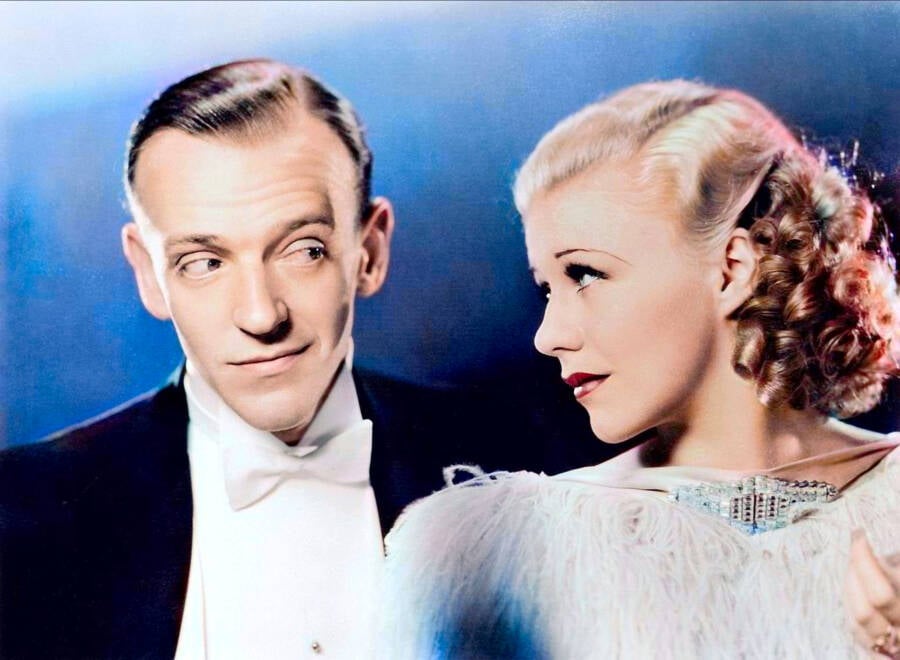
Allstar Picture Library Ltd/Alamy Stock PhotoFred Astaire and Ginger Rogers starred in some of classical cinema's most popular musicals.
With a few exceptions, most films of Hollywood's Golden Age relied less on their directors, writers, or producers to sell tickets. Instead, it was all about the lead actors. Even today, many of their names are highly revered. Gene Kelly, for example, has an award named after him by the Pittsburgh CLO.
But other names carry weight, too. In fact, in some instances, actors are still recognized by their first name alone. Fred Astaire and Ginger Rogers, for example, are often just referred to as "Fred and Ginger." Other actors, like Humphrey Bogart, Ingrid Bergman, Clark Gable, and Vivien Leigh, are still known to this day because they starred in films that are widely considered among the best of all time — notably, Casablanca and Gone With the Wind.
Unlike today, when a filmmaker's name carries far more weight, most people were likely unaware of who directed either of those Golden Age Hollywood classics (Michael Curtiz and Victor Fleming, respectively, if you were curious). In fact, most famous directors of the era were only widely known because they also starred in their films, such as Charlie Chaplin, Buster Keaton, and Orson Welles. Alfred Hitchcock, Billy Wilder, and John Ford were some of the few directors for whom this was an exception.

Glasshouse Images/Alamy Stock PhotoFilm director William Wellman, known for the 1937 film A Star Is Born.
In the former instance, Welles fundamentally changed the landscape of American filmmaking with his renowned movie Citizen Kane, which used experimental-for-the-time techniques like Dutch angles and utilized the medium of film itself as a key element in the story.
Other memorable names from the Golden Age of Hollywood include Cary Grant, James Stewart, James Dean, Gregory Peck, Grace Kelly, Audrey Hepburn, Marilyn Monroe, Elizabeth Taylor, and Sidney Poitier, the first Black actor to win an Academy Award for Best Actor.
Of course, nothing lasts forever, and the Golden Age of Hollywood eventually came to an end, making way for something new.
The End Of Hollywood's Golden Age
Based on No Film School's timeline, the Golden Age of Hollywood ended around 1963, but things had been moving in that direction for some time.
The first big contributor to the end of the Golden Age came in 1948, when the U.S. Supreme Court ruled against the Big Five studios in an anti-trust case, determining that Hollywood was too oligarchical. Per StudioBinder, "Every one of the 'Big 5' studios were vertically integrated — in other words, they controlled every facet of a film from pre-production to distribution."
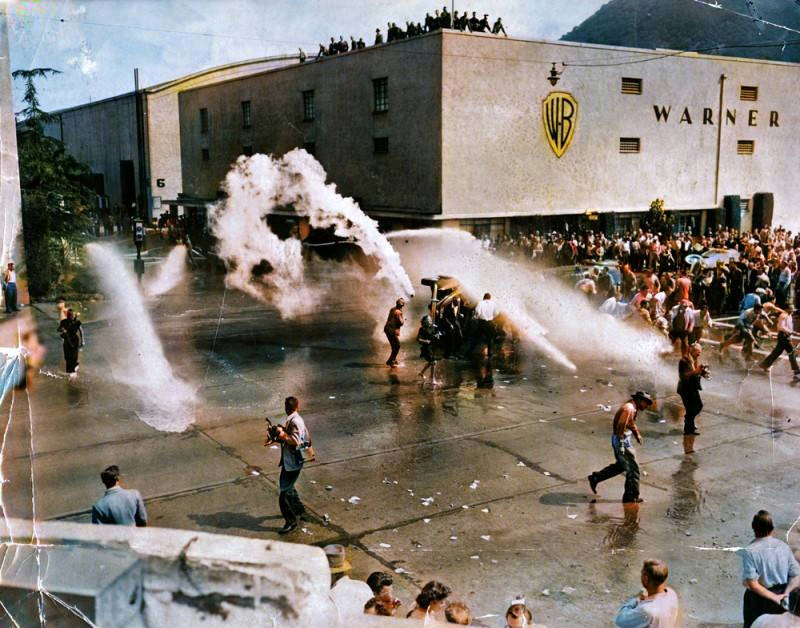
Los Angeles Public LibraryFirefighters working to extinguish a fire at Warner Bros. Studios after a film industry strike turned into a riot in 1945.
Although it took some time, the dominance of the Big Five eventually began to fade away, as theaters began showing films not produced by the Big Five.
Moreover, many Golden Age stars had grown older — and trying to sell a film based entirely on an attractive, young star didn't exactly work when said star was no longer youthful. Many of them would soon retire anyway.
Then, in the late 1960s and early 1970s, "new blood" arrived in Hollywood, bringing about an era that was less about star power and more about renowned directors and their styles. Sure, you might still see a film because of the star, but people had grown more interested in seeing a "Stanley Kubrick film" or a "Steven Spielberg film," regardless of who was in it.
This also ushered in an era of "blockbuster cinema," largely due to the success of movies like Star Wars and Jaws, which proved that big-budget, highly action-oriented films could outsell just about anything else. In many ways, these movies still see a lot of success today, for better and for worse.
After this look back at the Golden Age of Hollywood, check out our gallery of 44 nostalgia-inducing photographs of 1980s hip-hop. Then, see our gallery of vintage photos that show off the Golden Age of Las Vegas.

